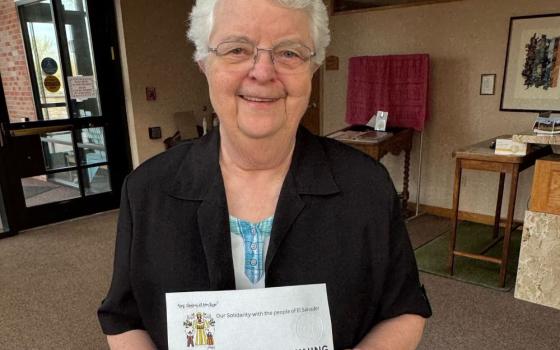President Barack Obama’s red-carpet welcome this week for Indian Prime Minister Manmohan Singh, the first state visit of Obama’s presidency, is obviously calculated to deepen ties with one of the world’s emerging superpowers. With a massive population of 1.2 billion, India has always been a potential global titan, but today it’s increasingly exploiting that capacity.
An under-appreciated point about India’s rise, however, is that it is also home to some of the impressive growth in Christianity anywhere in the world. That includes the Catholic church, which means that as the 21st century rolls on, India is positioned to become an important player not just in geopolitics but Catholic affairs too.
Here’s some background on Catholicism in India, drawn from The Future Church.
Though Catholics represent only 1.6 percent of the population, India is so big that this works out to a sizeable Catholic community of 17.6 million. The Church is divided into three rites: Syro-Malabar, Syro-Malankara, and the Latin rite. The Syro-Malabar rite has an estimated four million adherents, the Syro-Malankara about 500,000, and the rest belong to the Latin Rite. Local tradition credits the apostle Thomas with the introduction of Christianity, and believers who trace their ancestry to him are known as “Thomas Christians.” Missionary efforts in the South, centered on Kerala and Goa, followed the Portuguese conquest of Goa in 1510.
In many ways, Indian Catholicism is thriving. The Church is growing at a rate ahead of overall population growth, and by 2050 there could be almost 30 million Catholics. (That would put India well ahead of the Catholic population of Germany, for example, and bring it close to Poland.)
Outside its traditional base in the south, Catholicism is also expanding in the northeast. In the state of Arunachal Pradesh on the eastern border with China, where Catholicism arrived barely 25 years ago, there are today 180,000 Catholics out of a total population of 800,000.
Catholicism enjoys wide respect for its network of schools, hospitals and social service centers. When Mother Teresa died in 1997, the Indian government afforded her a state funeral, only the second private citizen after Mahatmas Gandhi to receive the honor. Her casket was born by the same military carriage which carried Gandhi’s remains in 1948.
Yet as the 21st century dawns, Indian Catholicism also faces three major headaches.
First, India has acquired a reputation for some of the most adventurous theology in Catholicism today, especially in “religious pluralism.” Thinkers such as Michael Amaladoss, Felix Wilfred, Raimon Panikkar, Aloysius Pieris and Jacques Dupuis, all of whom are either Indian or influenced by India, have been controversial because of the various ways in which they try to give positive theological value to non-Christian religions. That’s a logical development given India’s religious diversity, but it has raised alarms in quarters of the Church identified with evangelical Catholicism. Catholic leaders will want to encourage theological exploration that can open up dialogue, but without transgressing doctrinal limits.
Second, a noteworthy point about Catholic demography in India is the disproportionate share of Dalits, or untouchables. Estimates are that somewhere between 60 and 75 percent of Indian Catholics are Dalits, who often see Christianity as a means of protesting the caste system and of affiliating with a social network to buffer its effects. Beginning in the 1970s, the Catholic Church took up the Dalit cause in Indian society. Recently, India's Catholic leaders have backed efforts to repeal laws that provide protection to Hindu Dalits but not those of other religious backgrounds.
Yet some critics say the Church itself has a mixed record. Archbishop Marampudi Joji of Hyderabad, the first Dalit archbishop, said in a 2005 interview that “discrimination against Dalits has no official sanction in the Church, but it is very much practiced.” Joji told a story about a meeting between Catholic leaders and the former Prime Minister Indira Ghandi in the 1970s. When the bishops complained about the treatment of Dalits, according to Joji, Gandhi shot back: “First do justice to the Dalits within your Church, and then come back to me and make your representation on their behalf. I shall do my best for you then.”
As of 2000, just six of the 156 Catholic bishops in India were Dalits, and out of 12,500 Catholic priests, only about 600 were Dalits. Sensitivity to caste distinctions in the Church still runs strong. When Joji was appointed to an archdiocese where Dalits are not a majority, outgoing Archbishop Samineni Arulappa of Hyderabad complained, “Rome is being taken for a ride. Rome does not know the ground realities.”
Third is the rise of aggressive Hindu nationalism. Radical Hindu movements often claim that Christians engage in duplicitous missionary practices in an effort to “Christianize” India. Though by most accounts the Hindu nationalists represent a tiny fraction of the population, they have the capacity to create tremendous grief. Organized radical groups today sometimes move into Christian villages, preaching a gospel of Hindutva, or Hindu nationalism, and urge people to take part in “reconversion” ceremonies. These groups also routinely stage counter-festivals during Christmas celebrations.
Fear of a Christian takeover in nationalist circles is pervasive. In 2001, when Italian-born Sonia Gandhi ran in national elections, one national newspaper carried the headline, “Sonia – Vulnerable to Vatican blackmail!”
Sometimes these tensions turn violent. In 2006, for example, Archbishop Bernard Moras of Bangalore and two priests were attacked by a mob in Jalahally, 10 miles south of Bangalore. The three clerics had come to inspect the scene after St. Thomas Church and St. Claret School in Jalhally had been sacked by Hindu nationalists. Members of Catholic religious orders are also exposed. In April 1995, nationalists cracked the skulls of two nuns in a convent on the outskirts of New Delhi; another mob broke into a residence of the Franciscan Sisters of Mary Angels and beat the five sisters, along with their maid, using iron rods.
Navigating the rise of Hindu radicalism, while still identifying with India's legitimate national aspirations, will require a delicate balancing act.



